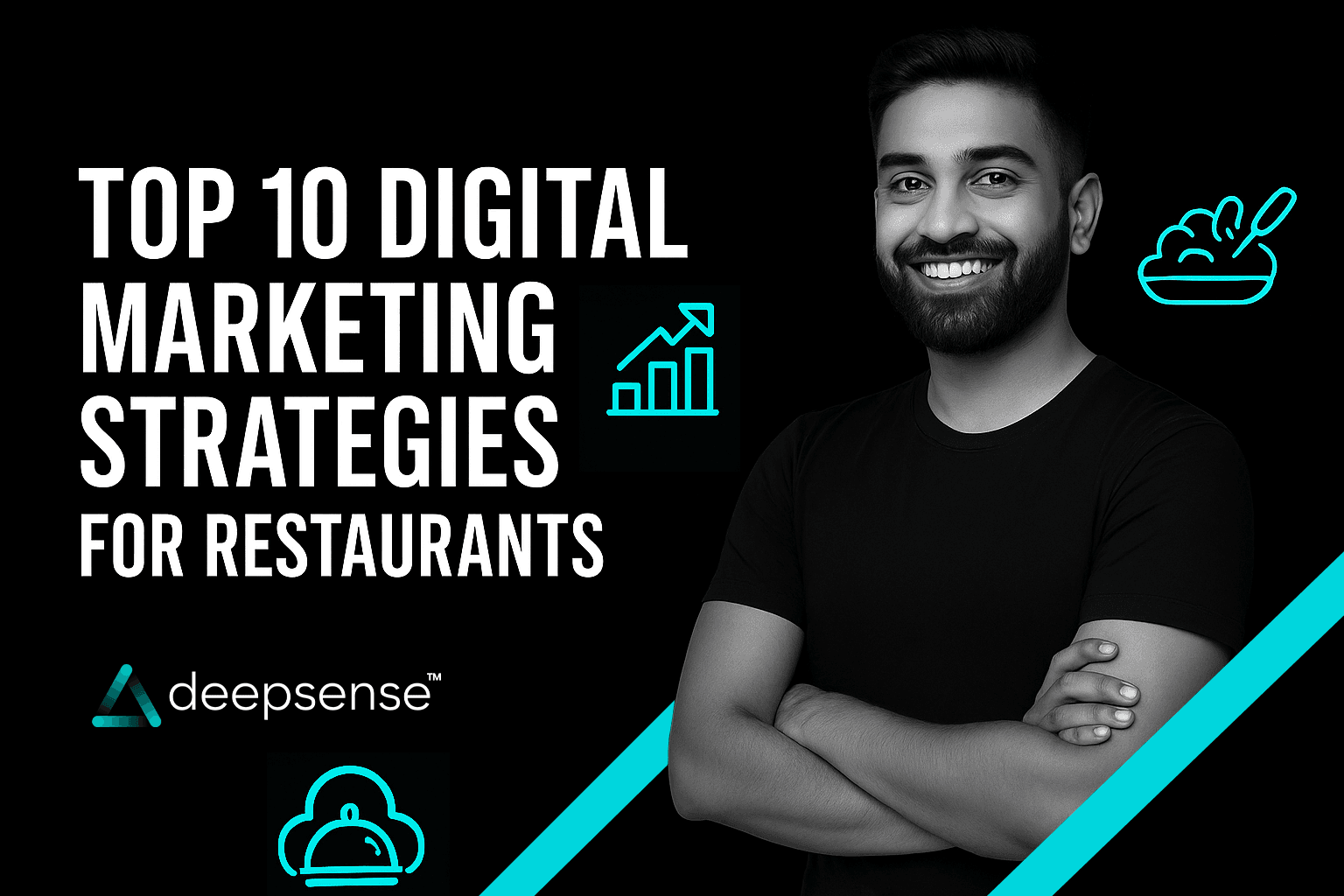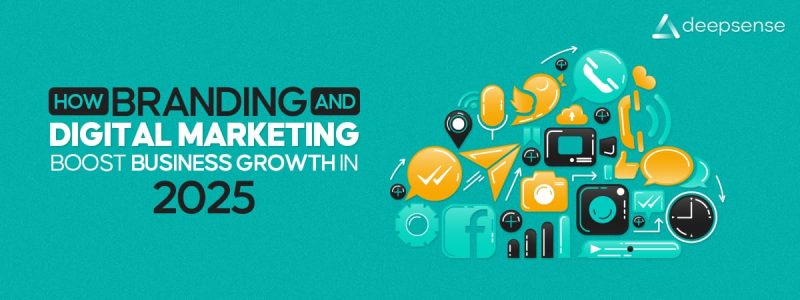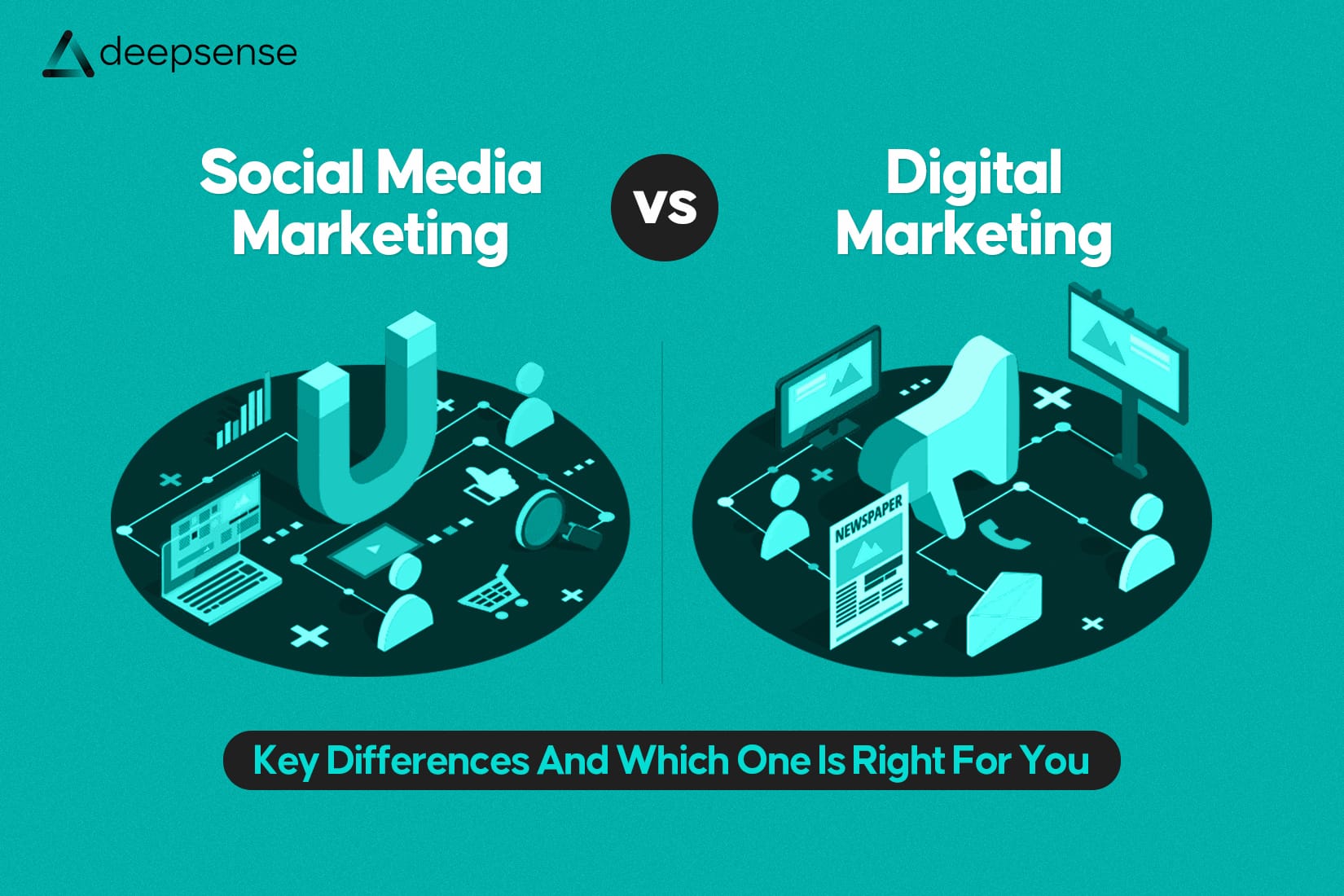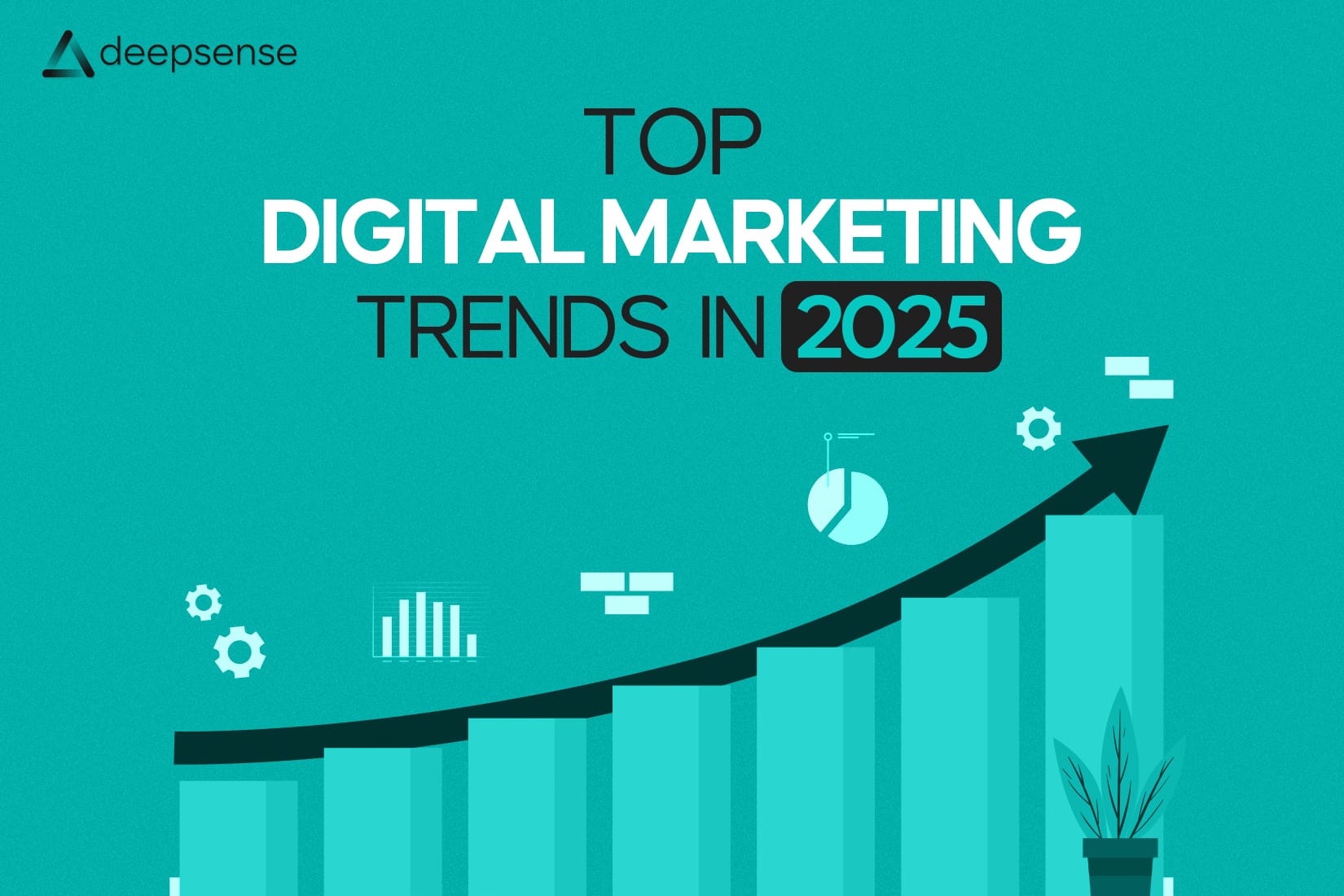Introduction: Your Food May Be Delicious, But Is It Discoverable?
You’ve nailed the recipes. Your ambience is on point. Customers love your food. But here’s the big question: Are enough people finding you online?
In today’s world, running a successful restaurant isn’t just about good food, it’s about great visibility. With over 60% of diners discovering new restaurants online before ever stepping foot inside, your digital presence is more important than ever.
Digital marketing isn’t just a buzzword anymore, it’s a necessity. Whether you’re a cozy café, a family diner, or a fine-dining restaurant, having an online strategy can make or break your foot traffic, delivery orders, and customer loyalty. This blog is your go-to playbook on the top 10 digital marketing strategies that are working for restaurants right now. Backed by data, real-life restaurant examples, and practical steps, you’ll leave with not just ideas, but a real plan.
Let’s turn your restaurant into a digital destination.
1. Google My Business Is Your Best Friend
First things first, claim and optimize your Google My Business (GMB) profile. It’s the easiest (and free!) way to get discovered locally.
- Add high-quality images of your dishes, interiors, and menu.
- Ensure your opening hours, contact info, and location are accurate.
- Encourage satisfied customers to leave reviews.
- Regularly post updates—specials, offers, new dishes.
According to BrightLocal, 87% of customers read online reviews before visiting a local business.
Want to show up when someone Googles “best pasta near me”? GMB is how.
2. Get Social, But Strategically
It’s not enough to just “post food pics.” You need to build a social brand that resonates.
What Works:
- Behind-the-scenes kitchen clips (Reels/Stories)
- Chef tips or recipe secrets
- Happy customer testimonials and reviews
- Polls, giveaways, or contests (e.g., “Name our new dessert”)
- Stories with countdowns for weekly specials
Tip: Restaurants that post consistently on Instagram & Facebook see up to 33% higher engagement and footfall.
Use tools like Buffer or Later to schedule and plan content in advance.
3. Email Marketing Isn’t Dead (It’s Deliciously Effective)
Email is still a powerhouse for customer retention and special promotions.
How to Use It:
- Collect emails via your website or during reservations
- Send weekly/monthly newsletters with:
- New dishes or seasonal menu updates
- Special discounts and loyalty perks
- Invitations to events or tasting nights
Case study: A Delhi-based café ran a birthday campaign and saw a 22% increase in bookings in one week.
4. WhatsApp & SMS Campaigns = Real-Time Conversions
Your diners are on WhatsApp more than email. Use it smartly.
- Send reservation reminders
- Promote lunch combos to office-goers nearby
- Share festive menu previews or new launches
- Request reviews after visits
Tools: Zoko, WATI, Twilio, and Yellow.ai can automate these messages.
5. Launch a Website That Sells, Not Just Shows
If your website only lists your menu and phone number, you’re under-utilizing it.
Include:
- Online ordering or direct table reservation systems
- Embedded Google Reviews & Instagram feed
- Blogs like “Why Our Chef Swears by Wood-Fired Pizza”
- Event pages with RSVP forms
Fun fact: Websites with blogs get 55% more traffic than those without.
6. Local SEO = More Foot Traffic
If someone nearby is searching for “best Thai food near me,” your restaurant should appear on top.
How to rank higher:
- Use location-based keywords (e.g. “Italian restaurant in Indiranagar”)
- Get listed on food directories (Zomato, Swiggy, Justdial)
- Keep your citations consistent across the web
- Encourage reviews on Google and aggregator platforms
Pro tip: Use schema markup for your website to enhance visibility in search snippets.
7. Partner With Local Influencers
Influencers can give your brand instant exposure.
Look for:
- Food bloggers or micro-influencers (5K–30K followers)
- YouTubers who do restaurant reviews
- Local lifestyle influencers
Invite them for free tastings or exclusive previews in exchange for a shout-out or reel.
“We invited 5 foodies and our weekend bookings doubled.”, Restaurant Owner, Hyderabad
8. Run Targeted Social Media Ads
Organic reach is declining. If you want guaranteed visibility, ads are the way.
What to promote:
- Launch of a new dish or seasonal menu
- Weekly buffet or brunch offer
- Special events (karaoke nights, live music)
Use Meta Ads Manager to target:
- Local audience (within 5–10 km)
- Interests (e.g. vegetarian food lovers, date night seekers)
- Time of day (promote lunch around 11AM)
9. Invest in Food Photography
People eat with their eyes first, especially on aggregator platforms and Instagram.
Tips:
- Hire a professional photographer every 6 months
- Use bright, natural lighting
- Top-down and close-up shots work best
- Avoid cluttered backgrounds
Listings with professional food photography receive up to 60% more clicks.
10. Build a Loyalty Program That Actually Feels Rewarding
Retaining customers is 5x cheaper than acquiring new ones.
Ideas:
- Point-based systems (e.g. ₹1 = 1 point)
- Digital punch cards (via app or QR code)
- Birthday & anniversary discounts
- Refer-a-friend programs
Data shows: Loyalty members spend 33% more per visit and are 3x more likely to recommend your place.
Conclusion: You Don’t Need to Be Everywhere, Just Where It Matters
Digital marketing for restaurants isn’t about doing everything, it’s about doing the right things, consistently.
Pick 3–4 strategies from this list that fit your budget and bandwidth. Focus, optimize, and then scale. Over time, you’ll not just grow your footfall or delivery numbers, but also build a brand that lives in people’s minds (and mouths).
The best part? Most of these strategies are free or low-cost and offer measurable impact.
Need help cooking up a digital strategy? Let’s chat over a cup of virtual chai.
FAQs
1. How do I choose which digital strategy to start with?
Start simple and smart. The three easiest and most impactful starting points are:
- Google My Business (GMB): It helps customers find you when they search “restaurants near me.”
- Social Media Presence: Platforms like Instagram and Facebook help build visual appeal and customer connection.
- Local SEO: Optimizing your content and listings for local keywords ensures you appear in local search results.
These strategies don’t require big budgets but offer big results—especially for foot traffic and delivery orders.
2. How much should I spend on digital marketing?
A safe starting point is 3–5% of your monthly revenue. For example, if your restaurant makes ₹5,00,000 per month, you can allocate ₹15,000–₹25,000 toward digital efforts.
Split it across:
- Paid ads (Instagram/Facebook/Google)
- Design & content creation
- Occasional influencer partnerships
As you track results and ROI, you can increase the budget strategically.
3. Are food bloggers really effective?
Absolutely. Especially micro-influencers (5K–50K followers) who focus on food content.
Why they work:
- They have engaged local audiences who trust their taste
- Their reviews often feel authentic and relatable
- A good reel or review can drive instant footfalls or delivery orders
Pro Tip: Start by inviting bloggers for free tastings. Ask them to post honest reviews and tag your handles.
4. Which platform is better—Instagram or Facebook?
It depends on your audience:
| Platform | Best For |
| Visuals, stories, reels, younger audiences (18–35) | |
| Event promotions, older demographics, local groups |
If you can, use both—but prioritize Instagram for visuals and Facebook for event engagement.
5. How often should I update my website?
Aim to update key details:
- Menu & hours: Every season or as soon as there’s a change
- Photos: Every 3–6 months
- Blog/Events: Monthly, or whenever you host something new
Keeping your website fresh boosts SEO and ensures customers get the right information.
6. What are some good tools for email marketing?
Here are three beginner-friendly tools perfect for restaurants:
- Mailchimp: Drag-and-drop templates, easy automation
- Sendinblue: Great for SMS + email combo
- ConvertKit: Better for storytelling and building personal connections
Use these to send:
- Birthday offers
- Menu updates
- Loyalty discounts
- Event invites
7. Can I run ads without a website?
Yes, and it’s common. You can link your ads to:
- Your Zomato or Swiggy listing
- Your Google Business profile
- A Google Form or WhatsApp link for table reservations
That said, a website adds trust. Even a one-page site can help convert better.
8. How do I track ROI from digital efforts?
Tracking is easier than it sounds. Use:
- Google Analytics for website traffic & conversions
- Meta Pixel for ad performance (Facebook/Instagram)
- POS Reports to track offers used in-store or via delivery
- UTM links to track which posts or ads led to clicks/orders
If a ₹1,000 ad brings ₹5,000 in sales—you’re winning.
9. What if I get bad reviews online?
Bad reviews happen—but how you handle them matters more.
Do:
- Respond quickly and professionally
- Apologize if needed, and offer a resolution
- Mention improvements made (e.g., “We’ve updated our packaging based on your feedback.”)
Don’t:
- Get defensive or argue publicly
Often, your response can turn a critic into a repeat guest—and show others that you care.
10. Do I need a full-time digital marketer?
Not right away. Start with:
- A freelancer or agency to handle campaigns and content
- A trained staff member to manage posts and replies
As you grow, consider hiring someone in-house. Digital marketing becomes more manageable (and profitable) when it’s consistent.











